Looking Back at Law School: A Lawyer Ruminates on Legal Education
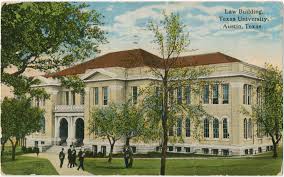
In recent years my law school alma mater has hosted an annual “celebration of diversity” event, which I recently attended out of curiosity. I thought that my law school class of long ago was quite diverse, with students from all over Texas, who had attended a variety of colleges and universities located throughout the country, representing a wide range of backgrounds—socio-economic, age, marital status, political orientation, and otherwise.
Alas, that is not what “diversity” means these days. “Diversity” connotes the politically-correct assortment of students (and faculty) from specific racial and ethnic groups that were “under-represented” in the era of primarily meritocratic admissions. Race-conscious affirmative action at the University of Texas School of Law—once considered controversial and sparingly used—has “fixed” that.
The current administration, and the beneficiaries of decades of racial preferences and ethnic quotas, now celebrate the triumph of identity politics over individual merit. The “celebration of diversity” is a de facto reunion for alumni of color—the “constituency” for continued race-based affirmative action. The law school administration assiduously cultivates that constituency with themed events. This, along with other troubling “innovations,” is a sea change from the UT I remember,
Have these changes improved legal education at UT? Pondering that question prompted me to write this blog post.
I graduated from UT law school in 1980. Many things have changed since I matriculated at UT 40 years ago, some for the better: the building (then known simply as Townes Hall) has gotten larger and better equipped, the library is more spacious, and the student job placement facilities are superb. (The venerable Tarlton Law Library, overseen for over 40 years by the late Roy Mersky, now shares a name with a thuggish, profane plaintiff’s lawyer who bestowed on UT a goodly amount of contingent-fee lucre, which secured for the donor ubiquitous naming rights, two statues on campus, and instant respectability.)
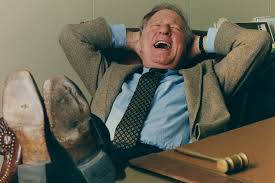
In other respects, things have gotten worse: tuition has risen sharply, for example. Texas residents currently pay about $35,000 a year in tuition, a bargain compared to comparable private law schools, but nonetheless a twenty-fold (or more) increase over what I paid during 1977-1980. Enrollment at UT has declined somewhat, but applications ebb and flow depending on the legal job market, which is largely out of the law school’s control.
UT was—and remains—a top-ranked school with selective admissions and a stellar bar-pass rate. UT is still the premier law school in Texas (although arch-rival Texas A&M finally acquired a law school and is climbing in the rankings).
Of course, nothing stays the same. Legal academia has changed over the past 40 years, as has the practice of law itself. Computerized legal research was in its infancy in 1977, and at UT third-year students serving as “Teaching Quizmasters” taught first-year students the mysteries of Shepardizing cases and how to use the West Key Number system. Students took handwritten notes in class because laptops had not been invented. Word processing had not yet displaced typewriters—IBM Selectrics were still the state of the art (and many students owned portable typewriters, now regarded as an ancient relic). These days legal research is mainly done on-line and law books are becoming obsolete.

There being fewer judges, judicial clerkships were harder to get back in the day, although overall the job market was robust enough for nearly all UT graduates to land a law-related position upon graduation– and without a mountain of debt. Law firms were not as big in 1980, and starting salaries were much lower, even in inflation-adjusted dollars. The trade-off is that four decades ago a starting associate had a reasonably good chance of making partner, at least outside of New York City. Now, all large law firms operate like Wall Street pyramids and withering associate attrition is the norm.
The elite students in my era toiled on the Texas Law Review—and still do. There were a few other student-run publications when I attended UT, but now there are many–reflecting the intervening fads and fashions in legal scholarship. UT now sponsors journals focusing on many different practice areas, as well as “women, gender, and the law”; Hispanic issues; civil liberties and civil rights; and, to be fair, one of the nation’s few conservative legal publications, the Texas Review of Law & Politics, founded by Adam Ross in 1996.
Student groups in my day were mostly informal—intramural sports teams and friends getting together for pitchers of Lone Star at the Posse—but in today’s politically-charged world things are different. For one thing, today’s law students quaff fancier brews! Also, student organizations at UT reflect the various hues of society’s rainbow of identity politics: there are now groups for Asians, Hispanics, African-Americans, women, LGBT, Jews, Mormons, Muslims, Christians, liberals, conservatives, veterans, greens, yoga aficionados, and even animal rights enthusiasts. (The only demographic groups not accounted for are men—the “Bachelors of Law” having apparently gone defunct–and Caucasians.)
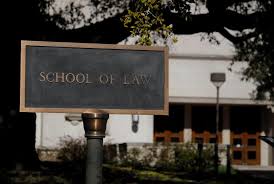
The faculty is definitely different (and larger), although due to the lack of a mandatory retirement age a few of my professors—some in their 80s–are still teaching. The new, “improved” UT no longer hires candidates with prosaic resumes. Former FBI agents who attended state-run law schools, such as esteemed scholar Corwin W. Johnson and former Dean John Sutton, would be summarily rejected under UT’s now-finicky criteria. Faculty salaries have skyrocketed and law school administrators have proliferated, trends not unrelated to the rise in tuition. UT’s current dean, Ward Farnsworth, makes almost $500,000 a year. I don’t wish to pick on Dean Farnsworth. He doubtless earns less than many of his counterparts elsewhere, and law firm partners have likewise experienced a meteoric increase in compensation in recent decades.
More worrisome is the plethora of “associate deans,” “assistant deans,” “directors,” and “assistant directors”—most of whom earn six figure salaries—overseeing functions such as “student affairs, inclusion, and community engagement.” (Somehow the school was able to function quite well in the past, with far fewer administrators and a considerably larger enrollment.) Perusing the UT website (which has replaced the catalog of yore), the most striking difference about UT law school, now versus then, is the political correctness of the place. When I attended, UT was exclusively in the business of training people to become lawyers. The school’s mission has seemingly morphed into that of a social justice academy.
The law school has a Committee on Diversity and Inclusion, and is home to a variety of cause-oriented academic centers, including the Bernard and Audre Rapoport Center for Human Rights and Justice, the Capital Punishment Center, the Center for Women in Law, the Richard and Ginni Mithoff Pro Bono Program, and, most notably, the William Wayne Justice Center for Public Interest Law. Justice was a federal judge based in Tyler, Texas, appointed to the bench by President Lyndon B. Johnson, and a notorious activist.
During his lengthy judicial career, Justice eagerly emulated the judicial overreach exhibited by the Warren Court, aggressively meddling in Texas’ public schools, prisons, and other institutions. In 1978, Justice struck down the Texas statute that allowed school districts to refuse enrollment to illegal alien students, a controversial ruling that was narrowly upheld by the U.S. Supreme Court in 1982. The inimitable Professor Lino Graglia, no fan of Justice’s, once remarked that the judge had “wreaked more havoc and misery and injury to the people of Texas than any man in the last 25 years.” As usual, Graglia–a lonely conservative sentinel on UT’s faculty—spoke the unpleasant truth.
Sadly, truth often goes unheeded. Prior to his retirement in 1998, Justice was regarded by many as the most hated man in Texas. But the Left reveres activist judges, and it is no wonder that Justice’s liberal acolytes wished to create a shrine in his honor at UT, where—in the name of promoting “access to justice”–his legacy can be worshipped. Justice was a junior varsity version of Justice William J. Brennan (after whom NYU law school has named a similar temple for leftist idolatry, the Brennan Center for Justice). UT desperately aspires to share NYU’s high-toned east coast liberal/elite status, and in 2002 hired Larry Sager from NYU to serve as Dean, an assignment that ended in scandal in 2011. Another sign of “progress”? Sager was forced to step down as Dean, but remained on the faculty as one of its highest-paid members (at $350,000 a year).

UT’s course offerings have strayed from the nuts-and-bolts curriculum of 40 years ago, and now include trendy classes and seminars that one would expect to find in UT’s Sociology Department, such as “America’s Struggling Middle Class,” “Animal Law,” “Race and the Law,” “Labor, Inequality and Human Rights,” and “Race and Politics: From the Black Power Movement to the Age of Trump.” Some law school courses (e.g., “Restorative Justice”) are so far afield that they are even taught by faculty from the School of Social Work! UT used to excel in Oil and Gas and Water Law.
In the name of providing students with “experiential learning” to better equip them for private practice upon graduation, UT offers a variety of legal “clinics” in which students represent clients under close faculty supervision. These clinics, however, do not represent a cross-section of conventional legal work, resembling instead legal aid for “oppressed victim groups” to whom liberals are sympathetic. Here are some of the clinics operated by UT: Human Rights Clinic, Immigration Clinic, Children’s Rights Clinic, Capital Punishment Clinic, Actual Innocence Clinic, Juvenile Justice Clinic, Transnational Worker Rights Clinic, Housing Clinic, and Mental Health Clinic. Notice a pattern? To an outsider, this seems like SJW training, not the type of practical skills development that might be useful to paying clients in a typical law practice.
And while UT has many eminent legal scholars on its faculty (albeit none approaching the stature of W. Page Keeton or Charles Alan Wright), in the interest of diversity it also employs washed-up political hacks from the Clinton administration (Norma Cantu), and numerous clinical instructors with deep roots in activist organizations rather than a significant record of scholarship. After I graduated, UT launched the career of an obscure graduate of Rutgers law school, who had previously taught at the University of Houston law school. After getting her ticket punched at UT, this left-leaning academic went on to teach at Penn Law, then Harvard Law, and now serves in the U.S. Senate, representing Massachusetts. I refer, of course, to Elizabeth Warren.
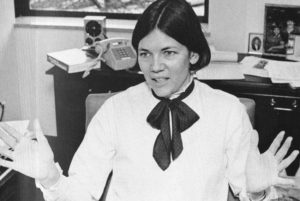
Reminiscing about the past can be perilous, because I realize that inertia—resistance to change–can color one’s memories. Being too hidebound can come across as “Get off my lawn,” from Gran Torino. I do not glamorize or airbrush my student days; they were difficult, often stressful, certainly not halcyon. My experience as a student at UT was not perfect. The instruction was often too theoretical, with insufficient emphasis on practical skills and problem-solving. Some professors, such as a young Mark Tushnet (now at Harvard), taught subjects—such as civil procedure–with which they had no practical familiarity. I learned more black-letter law in a six-week bar review course than I did in three years of law school. Still, in Professor Kingsfield-like fashion, my professors turned a skull full of mush into a fledgling lawyer. I owe my success as a lawyer to the training I got at UT.
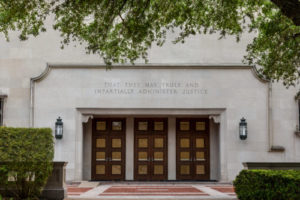
While some change is inevitable, not all change is good, especially simply for its own sake. Many changes at UT are not improvements. For example, few of the pedagogical shortcomings from my era have been addressed by recent curriculum changes. As I look around UT in 2018, I see legal education being delivered that is substantially more expensive than it was 40 years ago. Does the bloated PC bureaucracy make students smarter? Does the emphasis on “inclusion” and “diversity” make them learn better? Has increased exposure to social justice improved educational outcomes? I think not.
Forty years ago, without all these things, students graduated from UT with equal (or better) legal training, passed the bar exam, obtained judicial clerkships, entered law firms or government service, and practiced law at a high level. The main difference between then and now is a massive wealth transfer from students to faculty (and administrators) in the form of tuition increases, and the creation of a platform for the propagation of liberal dogma. This is nothing for alumni and taxpayers to celebrate.
A postscript: This year’s “celebration of diversity” at UT will feature the unveiling of a portrait of Heman Sweatt, an African-American who in 1946 was denied admission to UT law school–which was segregated at the time–due to his race. Sweatt challenged the adequacy of Texas’ all-black law school, to which he was admitted, on the grounds that it was not equal in quality, and in 1950 the U.S. Supreme Court (applying the standard of Plessy v. Ferguson) ruled in his favor. The landmark decision in Sweatt v. Painter, regarded as a precursor to Brown v. Board of Education, ordered UT to allow Sweatt to enroll in the law school, which he did. (Ironically, Sweatt never obtained his law degree at UT, withdrawing in 1952 due to failing grades and poor health.) Texans should be ashamed of the state’s history of race discrimination. UT presumably commissioned Sweatt’s portrait to atone for the state’s discriminatory admission policies more than 70 years ago. Perhaps a more appropriate tribute to Sweatt would be for UT to practice color-blindness in admissions and stop the odious practice of discriminating on the basis of race or ethnic origin. Actions would speak much louder than empty virtue-signaling on this subject.
































